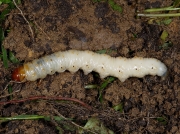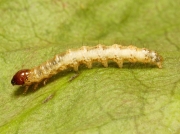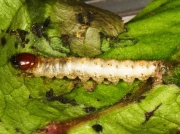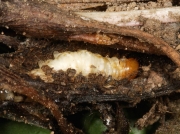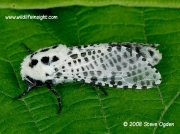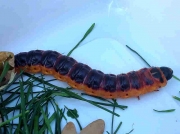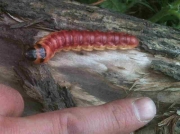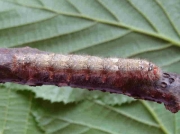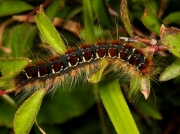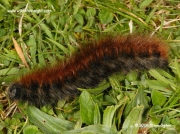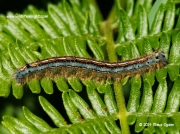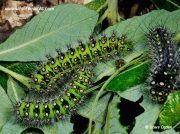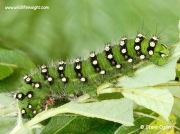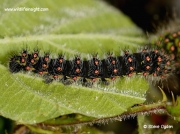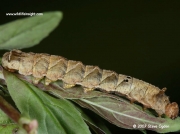British moth caterpillar picture gallery introduction
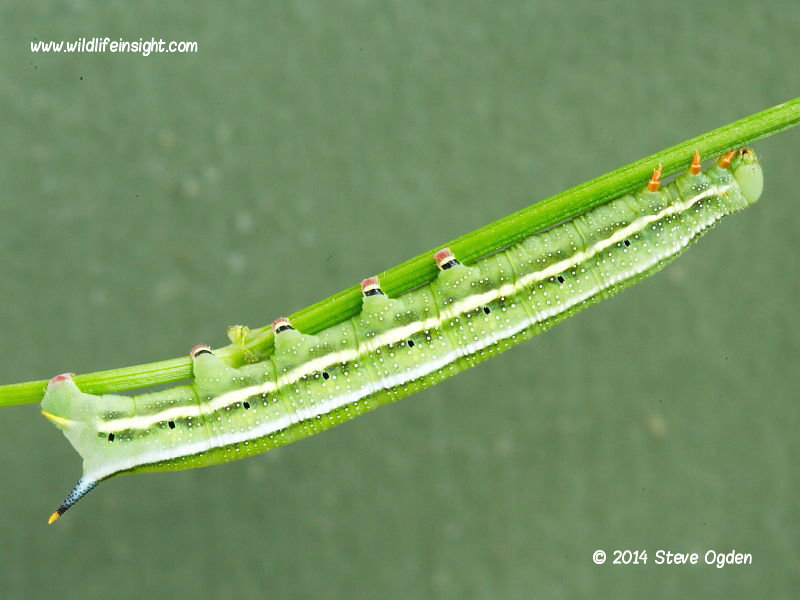 These galleries include photographs of the most commonly sighted moth caterpillars in the British Isles based on the thousands of identification enquiries received every year.
These galleries include photographs of the most commonly sighted moth caterpillars in the British Isles based on the thousands of identification enquiries received every year.
There are over 2,600 species of moth in the British Isles but only a small percentage have caterpillars that are commonly seen unless actively searched for. The gallery also includes some of the species less likely to be found.
Many of the most distinctive moth caterpillars are shown, including some of the largest, hairiest, most colourful, best camouflaged and most bizarre looking.
The gallery also includes some of the few caterpillars found in the British Isles that may at times be considered pests or even a health threat.
Finding a caterpillar in the moth picture gallery
If not found in this gallery try the other moth caterpillar galleries below.
Moth caterpillars page 1 – Some of the largest and hairiest caterpillars – Hepialidae to Thyatiridae (this page)
Moth caterpillars page 2 – The looping caterpillars – Geometridae
Moth caterpillars page 3 – The large Hawkmoth caterpillars – Sphingidae
Moth caterpillars page 4 – Some of the hairiest caterpillars – Notodontidae to Arctiidae
Moth caterpillars page 5 – Large group with both brown and brightly coloured, smooth skin larvae and other brightly coloured hairy caterpillars – Noctuidae
Other insect caterpillar/larvae galleries –
Butterfly caterpillars
Sawfly caterpillars/larvae
other insect larvae.
North American caterpillars
Why do many British moths have English names that appear unrelated to their appearance?
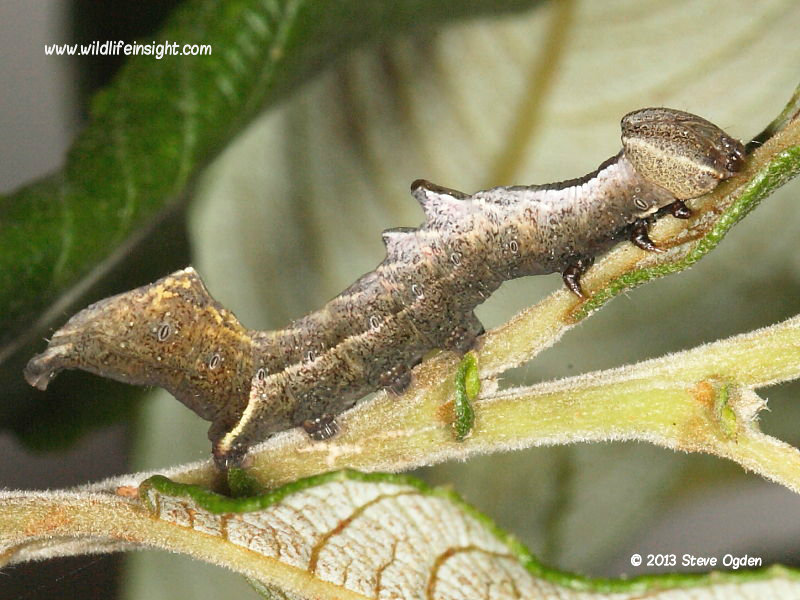 This question is understandably often asked. The reason being that many names refer to the appearance of the caterpillar rather than the adult moth. The most frequently enquired about species of caterpillar, the magnificent Elephant Hawk-moth, is a good example.
This question is understandably often asked. The reason being that many names refer to the appearance of the caterpillar rather than the adult moth. The most frequently enquired about species of caterpillar, the magnificent Elephant Hawk-moth, is a good example.
Identification tips
Many of the most recognisable species are included but there are also some that are very difficult to identify from a photo.
Caterpillars change appearance dramatically as they grow and moult and many species have several different colour forms in the same brood. Some of these variations may be included in the species life-cycle information.
Please note
There is still much to learn about the early stages of many moths. Whilst every effort is made to provide accurate identifications and information errors could occur. Should an error be spotted please let us know.
Ghost moth and Swift caterpillars- the Hepialidae family
There are only five species of caterpillar in the Hepialidae family found in the British Isles. All of which live in the ground, feeding on the roots of grasses and various plants. Consequently they are unlikely to be found unless the ground is disturbed. Four of the species are the caterpillars of the Swift moths while the other is the caterpillar of the Ghost Moth. The caterpillars of the five species can be difficult to distinguish between.
Goat moth caterpillar- the Cossidae family
There are only three caterpillar species in the Cossidae family in the British Isles. Of these, the species we receive the most enquiries about is the extraordinary caterpillar of The Goat Moth (subfamily Cossinae). This large caterpillar, up to 100mm long, lives for several years inside the tree trunks of a variety of deciduous trees, during which time it is unlikely to be seen. It is only when fully grown and ready to pupate that it is sometimes encountered wandering in search of somewhere to pupate. Otherwise, the caterpillar’s large exit holes in the bark may provide the best indication of the moth’s presence in the area. The Leopard moth, Zeuzera pyrina, (sub family Zeuzerinae) is unlikely to be found unless cutting down a tree as it spends its life boring within the trunk and pupates under the bark.
Burnet moth caterpillars – the Zygaenidae family
The Zygaenidae family includes the caterpillars of the brightly coloured day flying Burnet moths. The caterpillars of one of the most widely distributed species, the Six-spot Burnet, are commonly seen during the day on bird’s-foot trefoil or prior to pupating on grass stems.Large and hairy caterpillars – the Lasiocampidae family
The caterpillars in this family are some of the most regularly seen. Their dense hairs protect them from most birds enabling them to sit out, exposed, during the day. The caterpillars of The Drinker Moth, The Fox Moth, The lackey and The Oak Eggar are three of the most frequently sighted caterpillars in the British Isles.
Emperor Moth caterpillars of the silk worm Saturniidae family
In the British Isles the magnificent Emperor moth, Saturnia pavonia, is the only species of Saturniidae found. The caterpillars are quite regularly come across and can vary in colour. A spectacular moth with the males flying during the day attracted to the pheromones given off by the nocturnal females.
Endromidae, Drepanidae and Thyatiridae
Of the 17 British species in these three small families the caterpillar of the Peach Blossom, Thyratira batis, one of 9 members of the Thyatiridea family, is the most likely to be casually sighted. It is a common species and the caterpillar may be seen sitting on top of bramble/raspberry leaves where in its penultimate instar it is protected by its close resemblance to a bird dropping.
The rare and extremely localised Kentish Glory is the only British member of Endromidae and the 6 British members of the Drepanidae family include the Hook-tips and Chinese Character.
Finding a caterpillar in the moth picture gallery?
Click on the following links to display the other pages of moth caterpillar galleries by family.
Moth caterpillars page 1 – Hepialidae to Thyatiridae (this page)
Moth caterpillars page 2 – Geometridae
Moth caterpillars page 3 – Sphingidae
Moth caterpillars page 4 – Notodontidae to Arctiidae
Moth caterpillars page 5 – Noctuidae
If a caterpillar isn’t found in the moth caterpillar galleries it may be a species belonging to another family of insects and so it’s worth checking to see if it appears in either the butterfly caterpillar picture gallery, sawfly caterpillars/larvae or other insect larva picture gallery.
Some species are difficult to identify from photographs for a number of reasons – see help with caterpillar identification. You never know it may be one that’s not on the site and with your permission we would welcome adding a photo of it to the site and include it in a latest sightings report.
Recommended caterpillar reference books
PLEASE NOTE - we have closed comments due to excess spam but are still identifying many caterpillar queries sent by email to Steve - wildlifeinsight@gmail.com - see our page on help with caterpillar identification for more information.
